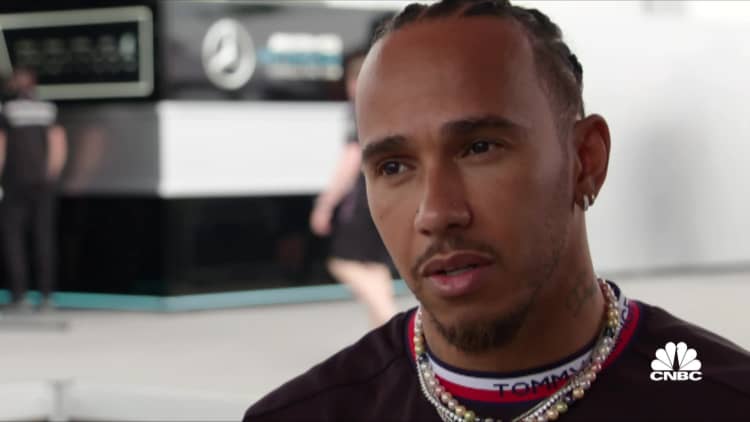Singapore’s F1 Grand Prix in 2022. 2022.
Bryn Lennon – Formula 1 | Formula 1 | Getty Images
Take an elite field of world-class racing experts. Ask them to spend fewer dollars toward beating their bitter rivals. The result, it turns out, is a slate of newly investable assets.
That’s how the heads of Formula 1 racing see it, crediting a league-wide budget cap with making the team businesses more sustainable and boosting valuations.
“When we got involved, literally, the bottom teams were being traded for zero. Today I don’t think you could buy a team for less than $750 million, and the top teams are valued [around] $3 billion,” Liberty Media CEO Greg Maffei told CNBC’s Sara Eisen in the documentary “The Inside Track: The Business of Formula 1,” debuting Thursday at 8 p.m. ET.
The budget cap — set at $135 million per team in 2023 — limits how much teams can spend on developing and building their race cars. Before it was introduced in 2021, the top teams in the league could spend multiples of that in a given year.
It’s a model similar to U.S. sports leagues, several of which limit what teams can spend on player salaries (though F1 driver salaries are excluded) — and it’s the work of F1-owner Liberty Media, which bought the league in 2017.
“We understood that some of the things that, for example the NFL, has done about creating more revenue parity, creating a cost cap, those allow for a way more competitive and more compelling sport,” Maffei said.

F1’s 10 teams each get a share of league revenue, brought in through sponsorships and media deals. They also collect individual revenue through team-specific partnerships, hospitality and engineering efforts.
Better performance on the track makes it easier to earn money, but it takes significant spending to get there.
“Before, someone investing in a race team didn’t know if you would spend $200 million a year or half a billion a year. There was everything in between,” said Guenther Steiner, team principal at Haas F1 Team.
Haas has seen a particularly aggressive revolving door of investors in recent years, plagued by poor performance on the grid and some poor luck: In March 2021, the team announced a title partnership with Russian fertilizer company Uralkali only to drop the investment a year later after Russia invaded Ukraine.
Haas now counts MoneyGram and Chipotle among its sponsors. The budget cap, Steiner said, has made the team’s balance sheet more predictable and made it easier to bring new partners on board.
“Because of the testing restrictions, it’s now difficult to take a driver out of America who maybe hasn’t been around these tracks,” McLaren’s CEO Zak Brown said.
Dan Mullan | Getty Images Sport | Getty Images
F1 teams expend huge amounts of capital throughout the race season to troubleshoot, repair and improve the cars. Major upgrades mid-season can be costly, but critical to a team’s success.
“It’s an R&D game,” Zak Brown, CEO of McLaren Racing, told CNBC in June from the sidelines of the Canadian Grand Prix weekend in Montreal. “We’re in the prototype business. We have new stuff on our car this weekend, we’ll have new stuff on our car next weekend, and depending on what your challenges are with the car is where you’re choosing where to invest your money.”
Before Brown took over the helm at McLaren in 2018, the team was losing money on an annual basis — as much as “nine figures,” he told CNBC.
“Now we’re a profitable sports team,” he said. “A lot of that is performance-based, and a lot of credit to Liberty that when they came in they established a cost cap.”
Tune in to CNBC at 8 p.m. ET Thursday for the premiere of “The Inside Track: The Business of Formula 1.”
Disclosure: CNBC is a sponsor of McLaren Racing.